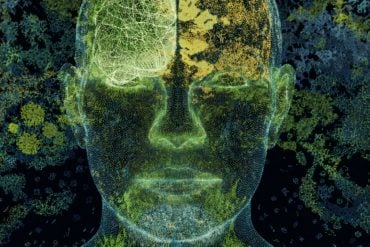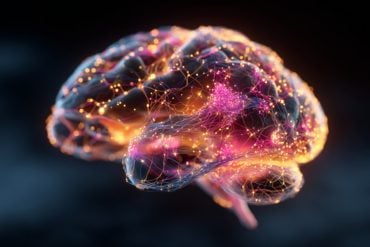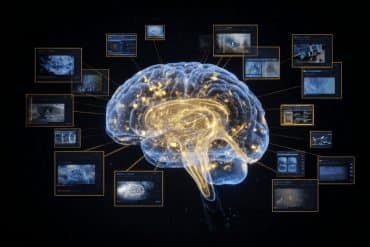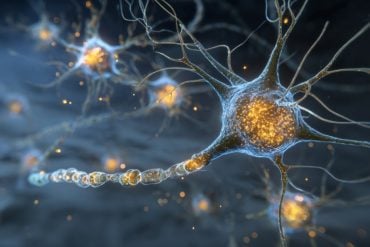Summary: Memory formation occurs through the continuous creation of new connectivity patterns between specific engram cells in different brain regions.
Engram cells are activated by experiences and change to hold information in our brains. The research used genetic techniques and optogenetics to study how engram cells form connections and identified a protein involved in regulating this connectivity.
This study sheds light on the mechanism behind memory storage in the brain and provides insights into how we learn and remember.
Key Facts:
- Memory engram cells are groups of brain cells that change and hold information based on specific experiences, allowing us to recall those experiences later.
- The study used genetic techniques and optogenetics to monitor the formation of new connections between engram cells, revealing a molecular mechanism mediated by a synaptic protein.
- Understanding the cellular mechanisms of memory formation advances our knowledge of how the brain processes information and forms memories.
Source: TCD
What is the mechanism that allows our brains to incorporate new information about the world, and form memories?
New work by a team of neuroscientists led by Dr Tomás Ryan from Trinity College Dublin shows that learning occurs through the continuous formation of new connectivity patterns between specific engram cells in different regions of the brain.
Whether on purpose, incidentally, or simply by accident, we are constantly learning and so our brains are constantly changing. When we navigate the world, interact with each other, or consume media content, our brain is grasping information, creating new memories.
The next time we walk down the street, meet our friends, or come across something that reminds us of the last podcast we listened to, we will quickly re-engage that memory information somewhere in our brain. But how do these experiences modify our neurons to allow us to form these new memories?
Our brains are organs composed of dynamic networks of cells, always in a state of flux due to growing up, aging, degeneration, regeneration, everyday noise, and learning. The challenge for scientists is to identify the “difference that makes a difference” for forming a memory – the change in a brain that stores a memory is refereed to as an ‘engram’, which retains information for later use.
This newly published study aimed to understand how information may be stored as engrams in the brain.
Dr Clara Ortega-de San Luis, Postdoctoral Research Fellow in the Ryan Lab and lead author of the article published today in the leading international journal, Current Biology, said:
“Memory engram cells are groups of brain cells that, activated by specific experiences, change themselves to incorporate and thereby hold information in our brain. Reactivation of these ‘building blocks’ of memories triggers the recall of the specific experiences associated to them. The question is, how do engrams store meaningful information about the world?”
To identify and study the changes that engrams undergo that allow us to encode a memory, the team of researchers studied a form of learning in which two experiences that are similar to each other become linked by the nature of their content.
The researchers used a paradigm in which animals learned to identify different contexts and form associations between them. By using genetic techniques the team crucially labelled two different populations of engram cells in the brain for two discrete memories, and then monitored how learning manifested in the formation of new connections between those engram cells.
Then using optogenetics, which allow brain cell activity to be controlled with light, they further demonstrated how these new formed connections were required for the learning to occur. In doing so, they identified a molecular mechanism mediated by a specific protein located in the synapse that is involved in regulating the connectivity between engram cells.
This study provides direct evidence for changes in synaptic wiring connectivity between engram cells to be considered as a likely mechanism for memory storage in the brain.
Commenting on the study, Dr Ryan, Associate Professor in Trinity’s School of Biochemistry and Immunology, Trinity Biomedical Sciences Institute, and the Trinity College Institute of Neuroscience,said:
“Understanding the cellular mechanisms that allow learning to occur helps us to comprehend not only how we form new memories or modify those pre-existent ones, but also advance our knowledge towards disentangling how the brain works and the mechanisms needed for it to process thoughts and information.
“In 21st century neuroscience, many of us like to think memories are being stored in engram cells, or their sub-components. This study argues that rather than looking for information within or at cells, we should search for information between cells, and that learning may work by altering the wiring diagram of the brain – less like a computer and more like a developing sculpture.
“In other words, the engram is not in the cell; the cell is in the engram.”
About this memory research news
Author: Thomas Deane
Source: TCD
Contact: Thomas Deane – TCD
Image: The image is credited to Neuroscience News
Original Research: Closed access.
“Engram cell connectivity as a mechanism for information encoding and memory function” by Tomás Ryan et al. Current Biology
Abstract
Engram cell connectivity as a mechanism for information encoding and memory function
Highlights
- Linking two distinct memories induces new connectivity between underlying engrams
- Changes in engram cell-specific synaptic wiring are required to update a memory
- Engram cells undergoing plasticity of connectivity exhibit structural changes
- Engram-specific knockdown of PSD-95 affects connectivity and impairs extinction
Summary
Information derived from experiences is incorporated into the brain as changes to ensembles of cells, termed engram cells, which allow memory storage and recall. The mechanism by which those changes hold specific information is unclear.
Here, we test the hypothesis that the specific synaptic wiring between engram cells is the substrate of information storage.
First, we monitor how learning modifies the connectivity pattern between engram cells at a monosynaptic connection involving the hippocampal ventral CA1 (vCA1) region and the amygdala.
Then, we assess the functional significance of these connectivity changes by artificially activating or inhibiting its presynaptic and postsynaptic components, respectively.
Finally, we identify a synaptic plasticity mechanism mediated by postsynaptic density protein 95 (PSD-95), which impacts the connectivity pattern among engram cells and contributes to the long-term stability of the memory.
These findings impact our theory of learning and memory by helping us explain the translation of specific information into engram cells and how these connections shape brain function.








